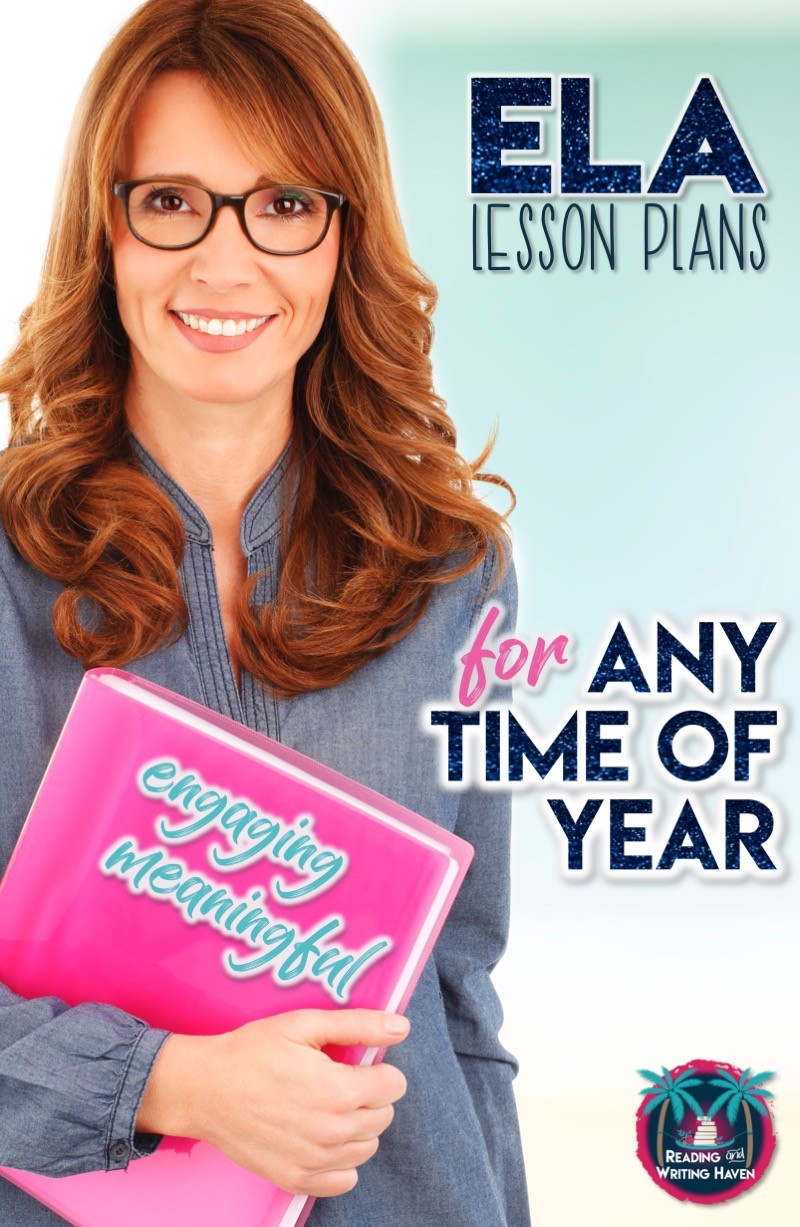 lesson plans to engage students in critical thinking and active learning #highschoolela #lessonplans" width="615" height="943" />
lesson plans to engage students in critical thinking and active learning #highschoolela #lessonplans" width="615" height="943" />Looking for meaningful ELA lesson plans that will engage students? Read on.
Any and Every Teacher: What are you doing today. I don’t have anything planned!
It’s happened to every single one of us. We have the best intentions and try to prepare in advance, but sometimes things – life, testing, clothing malfunctions, sickness, you name it – foil our lesson plans. It’s a good idea to have a folder or binder of back up plans for this exact reason.
Today, I chatted with my friend Lauralee who teaches high school language arts, and we came up with a list of ten activities that will engage students any time of year. Whether it’s the last month of school or the first, these ELA lesson plans won’t take long, but students will learn. Best of all, they don’t take much prep.
 lesson plans to engage students in critical thinking and active learning #highschoolela #lessonplans" width="615" height="943" />
lesson plans to engage students in critical thinking and active learning #highschoolela #lessonplans" width="615" height="943" />
Play an ELA game! Games that ask students to interact with figurative language, grammatical terms, poetry forms, vocabulary words, and writing concepts are the perfect way to actively engage all learners. Most students have played Truth or Dare, but they’ve probably never had the honor of playing Truth or Dare Classroom style!
Students love to eat, so bring in snacks for a meaningful activity. Before students dig in, ask them to analyze the colors, language, and fonts with this media literacy activity. Enlighten students with the marketing behind food products and packaging.
Ask students to read a text of their choice. Any high-interest nonfiction article will work! Then, have them create an original response to the article. Everything you need to teach your students how to combine nonfiction and poetry can be found in this creative writing assignment. Give students voice and choice!
This freebie gets students talking the entire class period. Students will analyze how tone changes the meaning of phrases. This public speaking activity is great for partner or group work.
Podcasts are perfect for one-day lessons. They help to build students’ listening comprehension, and they are also great practice for analysis. Try this chilling, high-interest podcast lesson on body farms.
Watch commercials! What? Yes – show students that these highly curated and specialized advertisements target certain audiences. Teaching audience analysis with commercials is unexpected and fun.
Take time to teach students about the ever-so-controversial punctuation mark: The Oxford Comma. The examples in this free print and go lesson allow for plenty of discussion (and laughter).
Get brainy with some brain-based vocabulary practice. Use your existing word list, or (if students do not have a current word list) use previous vocabulary lists to review. These activities will help students retain new word meanings. Here’s a digital friendly version.
Pair poetry with short films to make for an engaging paired-text analysis lesson. Check out this post for a handful of ideas regarding which poems and short films might pair well together. These graphic organizers help with scaffolding analysis of any fiction or nonfiction text.
There are so many ways you can use Play-Doh! Have students create molds that represent important symbols in literature. Or, ask them to play “pictionary” with Play-Doh for vocabulary words. They could also practice punctuating practice sentences by making end marks and commas out of the dough. If your students could use an introduction to or review of the writing process, try this kinesthetic Play-Doh activity for teens. Don’t have Play-Doh? No worries! You can try all of these activities with aluminum foil, pipe cleaners, or cardstock. Teaching remotely? Here’s the digital writing process lesson I use to decrease frustration and maximize learning!
After Lauralee and I sat down to brainstorm this list, we realized we had way more than ten ideas to help teachers who are in a bind. If you want more, check out her post for ten more language arts lesson plans to keep students engaged – in May or any time of year!

Hi, I'm Melissa. I'm passionate about teaching and learning. As an instructional coach, I'm always asking questions, trying new things, and reflecting. This is the space where I share my learning with others. Learn more.